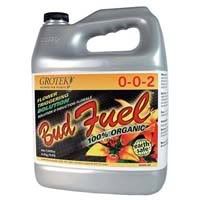Careful experiments using hydroponics have shown that each of the elements a plant needs has a very specific function in plant growth.
Nitrogen:
Nitrogen is a component of proteins, which form an essential part of protoplasm and also occur as stored foods in plant cells. Nitrogen is also a part of other organic compounds in plants such as chlorophyll, amino acids, alkaloids and some plant hormones.
Sulfur:
Sulfur forms a part of the protein molecule. Plant proteins may have from .5- 1.5% of this element. The sulfhydryl group is a very important group essential for the action of certain enzymes and coenzymes. In additional sulfur is a constituent of ferredoxin and of some lipids.
Phosphorous:
This element is also a component of some plant proteins, phospholipids, sugar phosphates, nucleic acids, A TP and NADP. The highest percentages of phosphorous occur in the parts of the plant that are growing rapidly.
Potassium:
Potassium accumulates in tissues that are growing rapidly. It will migrate from older tissues to merestematic regions. For example, during the maturing of the crop there is movement of potassium from leaves into the fruit.
Calcium:
All ordinary green plants require calcium. It is one of the constituents of the middle lamella of the cell wall, where it occurs in the form of calcium pectate. Calcium affects the permeability of cytoplasmic membranes and the hydration of colloids. Calcium may be found in combination with organic acids in the plant.
Magnesium:
Magnesium is a constituent of chlorophyll. It occupies a central position in the molecule. Chlorophylls are the only major compounds of plants that contain magnesium as a stable component. Many enzyme reactions, particularly those involving a transfer of phosphate, are activated by magnesium ions.
Iron:
A number of essential compounds in plants contain iron in a form that is bound firmly into the molecule. Iron plays a role in being the site on some electron carriers where electrons are absorbed and then given off during electron transport. The iron atom is alternately reduced and then oxidized. Iron plays a very important role in energy conversion reactions of both photo synthesis and transpiration.
Boron:
Although the exact function of boron in plant metabolism is unclear, boron does playa regular role in carbohydrate breakdown. Symptoms of boron deficiency include stunted roots andshoot elongation, lack of flowering, darkening of tissues and growth abnormalities.
Zinc:
Zinc is essential to the normal development of a variety of plants. Large quantities of zinc are toxic to plants.
Manganese:
The importance of manganese as an activator of several enzymes of aerobic respiration explains some of the disruptive effects of a manganese deficiency on metabolism. The most obvious sign of a manganese deficiency is chlorosis. Manganese chlorosis results in the leaf taking on a mottled appearance.
Copper:
Copper is a constituent of certain enzyme systems, such as ascorbic acid oxidize and cyto chrome oxidize. In addition" copper is found in plastocyanin, part of the electron-transport chain in photosynthesis.
Molybdenum:
Molybdenum is important in enzyme systems involved in nitrogen fixation and nitrate reduction. Plants suffering molybdenum deficiency can absorb nitrate ions but are unable to use this form of nitrogen.
Plant Uses of Individual Elements:
7:39 AM
ThanateTan







